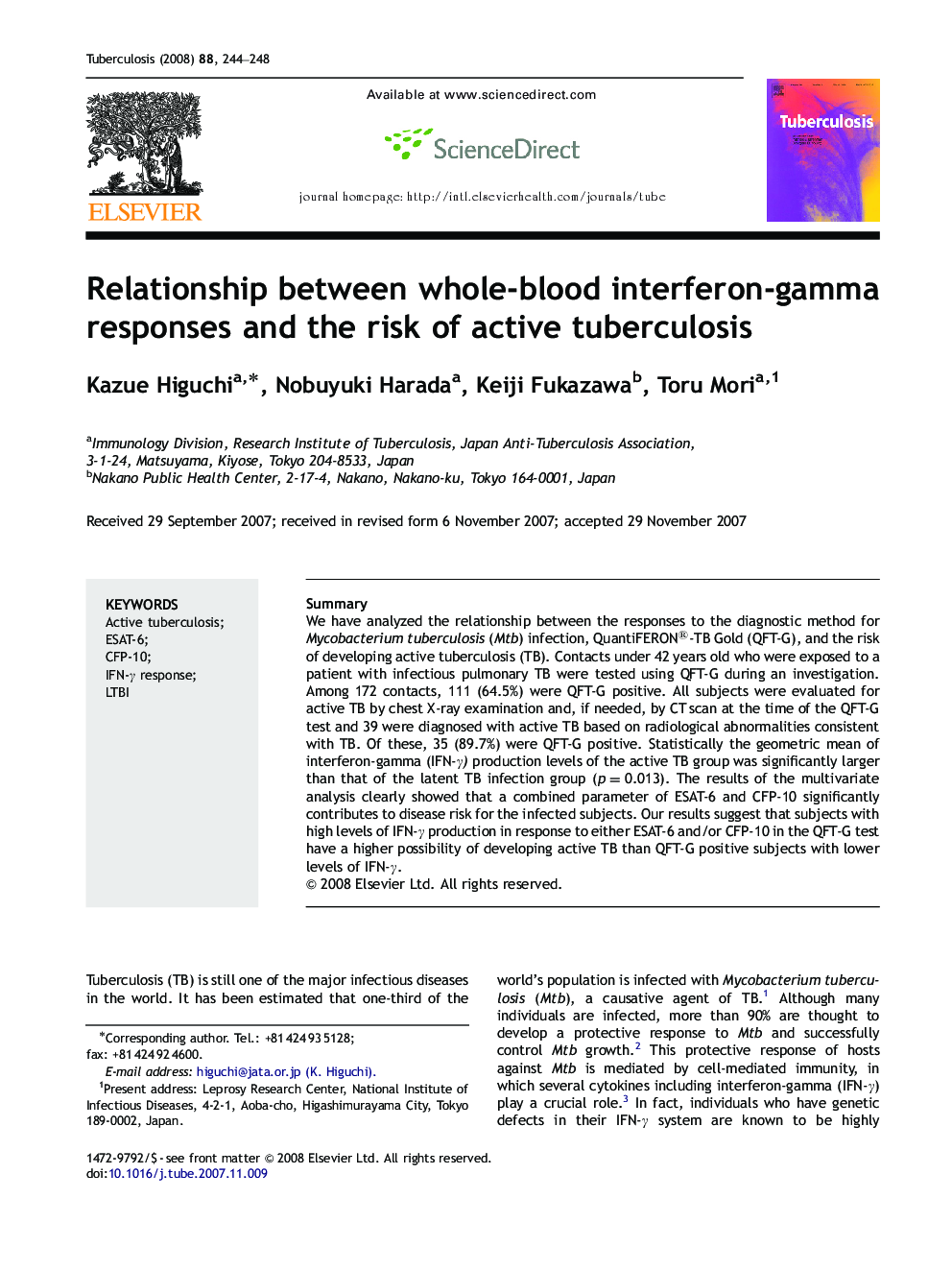| Article ID | Journal | Published Year | Pages | File Type |
|---|---|---|---|---|
| 2401941 | Tuberculosis | 2008 | 5 Pages |
SummaryWe have analyzed the relationship between the responses to the diagnostic method for Mycobacterium tuberculosis (Mtb) infection, QuantiFERON®-TB Gold (QFT-G), and the risk of developing active tuberculosis (TB). Contacts under 42 years old who were exposed to a patient with infectious pulmonary TB were tested using QFT-G during an investigation. Among 172 contacts, 111 (64.5%) were QFT-G positive. All subjects were evaluated for active TB by chest X-ray examination and, if needed, by CT scan at the time of the QFT-G test and 39 were diagnosed with active TB based on radiological abnormalities consistent with TB. Of these, 35 (89.7%) were QFT-G positive. Statistically the geometric mean of interferon-gamma (IFN-γ) production levels of the active TB group was significantly larger than that of the latent TB infection group (p=0.013). The results of the multivariate analysis clearly showed that a combined parameter of ESAT-6 and CFP-10 significantly contributes to disease risk for the infected subjects. Our results suggest that subjects with high levels of IFN-γ production in response to either ESAT-6 and/or CFP-10 in the QFT-G test have a higher possibility of developing active TB than QFT-G positive subjects with lower levels of IFN-γ.
